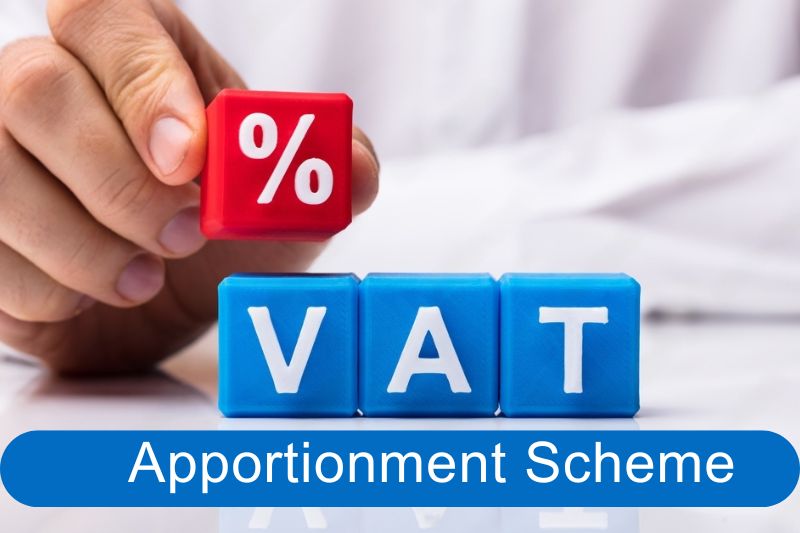How VAT Apportionment Scheme Works

July 03, 2020
A retail business is the one that sells directly to the public and so it may find it difficult to issue a VAT invoice for each sale. Such examples are for small convenience stores where many transactions are for less than £1, but which will include VAT. In such cases, it is difficult to issue a VAT receipt for each sale and it is time-consuming to record each sale separately to show the VAT in detail. VAT Retail Schemes, such as the apportionment scheme come in handy as it allows a simpler recording of VAT.
Businesses do not need to apply to use a retail scheme, but they should start using one at the beginning of a tax period. Note that if a business is involved in both retail and non-retail transactions then the retail scheme can only be used for that part of the business, the non-retail section must use the normal method of showing VAT. The business can leave the scheme at the end of any VAT period, but if the turnover exceeds £130 million, then it must compulsorily leave the scheme.
Under the retail schemes, sales to other VAT registered businesses must be accompanied by a VAT receipt and if a customer requests a VAT receipt then one must be provided.
Retail schemes can be used in conjunction with the cash accounting scheme and the annual accounting scheme.
How VAT Apportionment Scheme Works:
VAT Apportionment scheme-1 can be used by businesses whose annual turnover does not exceed £1 million. This scheme can only be used if the business buys goods for resale. It does not cover businesses that produce or grow their own goods for sale, are in catering, or provide a service.
It can, therefore, be used where it is not possible to calculate the amount of VAT from the gross daily takings (sales).
The overall VAT liability on the purchase and sale of goods is calculated by comparing the value of purchases at each VAT rate against the total value of gross sales and calculating the VAT liability accordingly.
Example
Let’s suppose total purchases are: £15,000 (net of VAT), split by VAT rates as follows:
- £9,000 of goods at 20%
- £2,100 at 5%
- £3,900 at 0%
Let’s suppose total sales are: £20,000.
Step 1
To make the calculation, take each purchase figure in turn that has been subject to VAT and divide by the total purchases. Note: ignore the zero-rated items as no VAT is included in this figure.
| VAT | £ |
| Goods at 20% | 9 000 / 15,000 |
| Goods at 5% | 2,100 / 15,000 |
Checking the calculations - to rationalize why this works, if you take the same calculation for each of the three levels of VAT and multiply by 100 this would give the purchases at each level of VAT as a percentage of the total purchases i.e. an apportionment of each level against the total.
Checking this out and including the zero rate purchases would give:
| VAT | £ |
| Goods at 20% | 9,000 / 15,000 x 100 = 60% |
| Goods at 5% | 2,100 / 15,000 x 100 = 14% |
| Zero rated goods | 3,900 / 15,000 x 100 = 26% |
| Total percentage | 60 + 14 + 26 = 100% |
Step 2
Ignoring the zero-rated purchases, multiply each of the figures gained in step 1 by the gross value of quarterly sales to find the gross amount of apportioned purchases at each level of VAT
| VAT | £ |
| Goods at 20% | 9,000 / 15,000 x 20,000 = 12,000 |
| Goods at 5% | 2,100 / 15,000 x 20,000 = 2,800 |
Step 3
Finally, divide each by the relevant VAT fraction (6 for standard rate and 21 for reduced rate). To calculate the total amount of VAT due for the quarter.
| VAT | £ |
| Goods at 20% | 12,000/ 6 = 2,000 |
| Goods at 5% | 2,800 / 21 = 133.34 |
Hence, the total VAT liability due to HMRC for the quarter will be £2,133.34
We believe that the above-mentioned information and example are sufficient to give you an overview of the VAT Apportionment Scheme. It is very important that the correct VAT Scheme is used to calculate your VAT figures and VAT Return is filed on time to avoid any penalty and interest.
We at ‘Doshi Outsourcing’ have been providing VAT return filing services for more than two decades. From VAT registration to application of correct scheme and calculation to filing of your VAT return - we can do everything on your behalf. Outsource VAT return services to ‘Doshi Outsourcing’ and benefit from professional and competent services at a cost-effective price. You can count on us for this.


